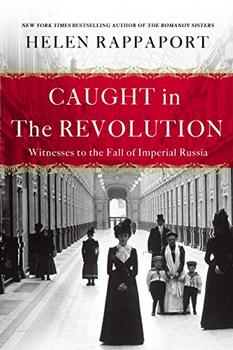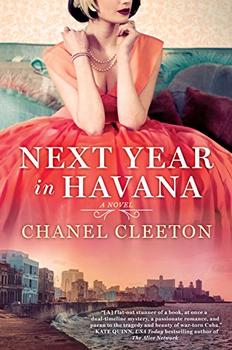Summary | Excerpt | Reviews | Beyond the book | Read-Alikes | Genres & Themes | Author Bio

A Subtropical Delirium
by Mark KurlanskyHistory with flavor...culture with spice...language with gusto...it would be hard to find a better mix of messages about one of North America's oldest cities than this piquant paean to the Cuban capital, Havana, written by the award-winning Mark Kurlansky.
Havana, with its crowded narrow streets and small but colorful harbor, was founded in 1514, not long after Cuba was famously discovered and mistaken for China in 1492. Established on the backs of the genocide of the majority of its inhabitants—the Taino Indians—and now slowly ticking along under a revolutionary regime gradually losing its fizz, Cuba's most famous urban center has never been far away from the USA, either in distance, or in America's plans and dreams for the region.
Americans liked Cuba so much they waged the Spanish-American War (1898) to get it, then ran it like their own corrupt casino and backyard bordello. After years of exploitation, Cubans found a hero—Fidel Castro—willing to go to the limit to get the country back. Kurlansky reminds us that though Havana may have seen better days, the Castro revolution put food on the table and gave jobs to the jobless.
Kurlansky worked as the Caribbean correspondent for several large American dailies from 1976 to 1991, mostly for the Chicago Tribune, and has seen Havana in all her aspects—from the peeling paint and nearly empty harbors to the vibrant music and zesty foods. There are the classic American cars, 1950s vintage Cadillacs, Oldsmobiles and Fords still kept road-worthy by a few fortunate Habaneros (residents of Havana) who can make a living as taxi drivers in these vintage rides lovingly held together with hand-manufactured parts. He conveys each component of the city's culture with feeling and not a little admiration. He interjects smatterings of verse from some of the storied Latino writers, most especially the poet/revolutionary hero José Martí (see 'Beyond the Book').
Kurlansky includes observations and anecdotes from the gringo giants who were fortunate to enjoy the special pleasures that the city has had to offer: Englishman Graham Greene, who unabashedly recorded the Havana nights of erotic floorshows, available women, booze and drugs; and American Ernest Hemingway, who lived in Havana for 30 years, but whose novels are still unavailable for Cubans to read.
In an agile fact-based style that conveys the emotion and the casual verve of the city he depicts, Kurlansky celebrates Havana cuisine, including recipes from indigenous chefs for such arcane dishes as ajiaco, a combination of local root crops and European meats. He destroys, for some, the myth of the sought-after Cuban cigars said to have been rolled on the thighs of Havana's beautiful young ladies—the cigars may be worth the price but the rolling never happened.
Baseball is so dear to the hearts of Habaneros (and to the author), that he devotes considerable prose to its significant Cuban history. The sport took hold and gained primacy beginning in the 1860s; post-revolution, baseball was considered just another profession, its stars paid like all other Cuban workers—not particularly well. Kurlansky also delves into the arcane connections between the once state-ordained Catholic religion and Santería, a mélange of Catholicism with ancient spiritualist customs from West Africa.
Kurlansky skillfully combines these disparate aspects, examining them in the hindsight of history and in the light of the current regime, skirting speculation about the changes that must be waiting in the wings since the death of Fidel Castro late last year. He gives us Havana as a city to love, a city to invest our best hopes in as changes on the diplomatic front are causing a warming trend in our relations with our southeastern island neighbor.
Kurlansky makes Havana feel more familiar than ever, reminding us of our mutual ties and affinities.
![]() This review was originally published in The BookBrowse Review in April 2017, and has been updated for the
March 2018 edition.
Click here to go to this issue.
This review was originally published in The BookBrowse Review in April 2017, and has been updated for the
March 2018 edition.
Click here to go to this issue.

If you liked Havana, try these:

by Helen Rappaport
Published 2018
From the bestselling author of The Romanov Sisters, Caught in the Revolution is Helen Rappaport's masterful telling of the outbreak of the Russian Revolution through eye-witness accounts left by foreign nationals who saw the drama unfold.

by Chanel Cleeton
Published 2018
After the death of her beloved grandmother, a Cuban-American woman travels to Havana, where she discovers the roots of her identity--and unearths a family secret hidden since the revolution...
Your guide toexceptional books
BookBrowse seeks out and recommends the best in contemporary fiction and nonfiction—books that not only engage and entertain but also deepen our understanding of ourselves and the world around us.